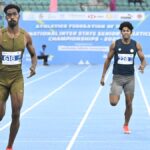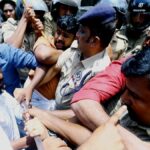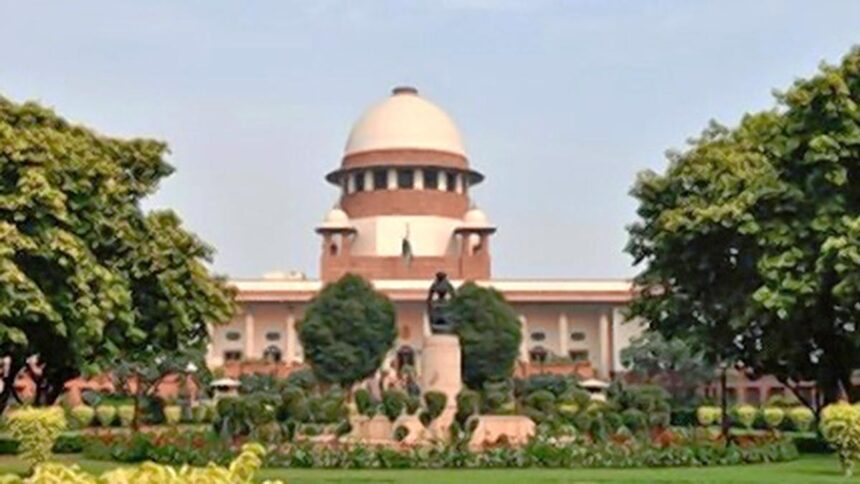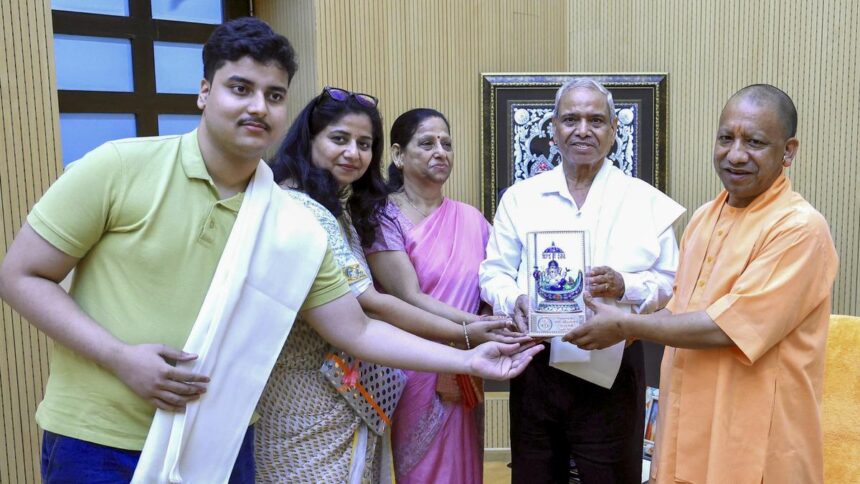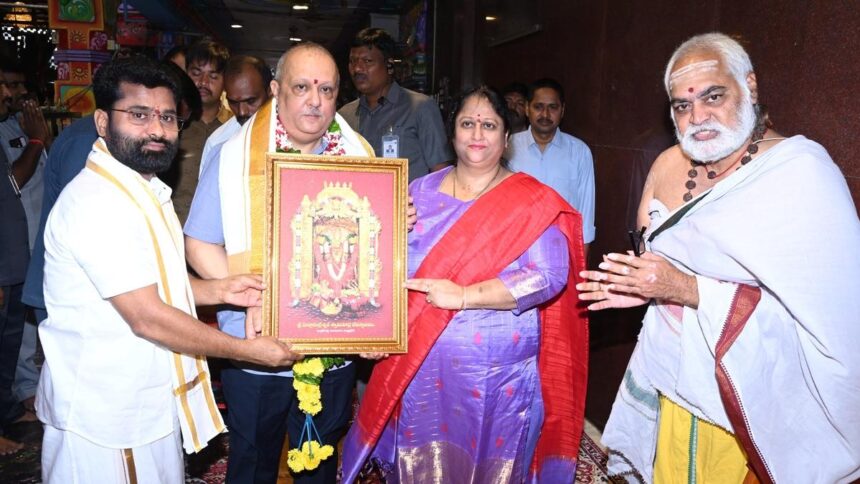With practised ease, Sarasu’s finger glides over the smartphone screen from one video to the next, as she lists out the things she learned to do with the phone. For a while, the septuagenarian worker of the Mahatma Gandhi National Rural Employment Guarantee Scheme (MGNREGS) even had a YouTube channel featuring her folk songs, which accidentally got deleted when her phone developed a technical snag.
Standing in front of her modest house in the deep interiors of Pullampara panchayat in Thiruvananthapuram, she speaks of the joy of video calling her grandchild and taking photographs.
In another ward in the same panchayat, S. Boban, a veteran farmer, has just prepared the ground for black pepper cultivation using PVC pipes, a novel method he learned from YouTube. His only complaint is that now he gets to see too many videos on black pepper cultivation on his timeline, due to the algorithms.
Both of them until recently belonged to the vast number of “digitally illiterate” citizens, sometimes left behind in a world moving along unfamiliar trajectories. But now they are part of the 21.87 lakh people across Kerala who have completed the State government’s Digi Kerala digital literacy programme, making Kerala the first State to achieve total digital literacy. Chief Minister Pinarayi Vijayan made the official declaration on Thursday (August 21).
In a grassroots-level movement akin to the landmark total literacy campaign of the late 1980s, the State utilised its strong local self-government mechanism to the hilt to bridge the digital divide.
The story begins in 2021 at Pullampara, a hilly rural region located approximately 25 km from Thiruvananthapuram, the State capital. A group of government officials native to Pullampara began noticing long queues regularly in front of one of the few banks in the panchayat. Many of them were MGNREGS labourers who had travelled long distances just to check their account balance.
Sajina Sathar, then a district women’s welfare officer and an assistant director in the Local Self-Government department at present, says that the travails of those who kept aside their daily work for something as simple as an account balance check kindled a thought about teaching them to use the basic digital technology required in daily life. Thus was born the project ‘Digi Pullampara’, the precursor to Digi Kerala.
103-year old Karunaka Panicker and his son, Rajan, watching a song on YouTube at their home in Pullampara panchayat in Thiruvananthapuram.
| Photo Credit:
S.R. PRAVEEN
The plans to impart digital literacy to all residents of the panchayat began in August 2021 under a five-member core team led by panchayat president P.V. Rajesh. The team had Sajina, MGNREGS district engineer Dinesh Pappen, and S. Sanob, a trainee of the Kerala Administrative Service, and a technical education department employee Shamnad Pullampara as its members. A survey was soon carried out across all wards to identify those who are digitally illiterate. Out of 3,917 people thus identified, training was provided to 3,300 as the rest were bedridden.
“We trained our volunteers on ways to convince senior citizens who were reluctant to adopt digital technology and smartphones about the benefits and possibilities of adopting the new technology. We convinced them that they could video call their grandchildren, watch an episode of a television serial they might have missed, the wide variety of helpful videos available on YouTube to learn new skills, and the benefits of Internet searching,” says Sajina.
The core team designed 15 activities in three modules for training, ranging from basic smartphone usage to navigating social media applications to bill payments and accessing government services. APJ Abdul Kalam Technological University vetted the modules that were used to train in the panchayat as well as across the State, says Sajina.
While the National Digital Literacy Mission’s guidelines for digital literacy require training to be imparted only for those up to 60 years of age, the Digi Pullampara and later the Digi Kerala programme included people of all ages, even those above the age of 100. Instead of the focus on computer literacy at the national level, the programmes at the panchayat and State levels were tweaked to make people proficient in using smartphones.
Students from the National Service Scheme (NSS) units of five engineering colleges in the region and a higher secondary school aided in the training programme, along with Kudumbashree volunteers, SC/ST promoters, and library council members. The training was carried out in three ways — in places like MGNREGS worksites and Kudumbashree neighbourhood groups where people come together in considerable numbers, through volunteers visiting households, and through the younger generation in households with senior citizens.
“For years, I have used a basic mobilephone, as my idea of a phone was that it was meant for calling only. I used to think of smartphones as some kind of luxury. But these kids told me how knowing this would be helpful in the future. Now, it is helping me in farming, in paying bills from home, and in video calling my daughter who is abroad,” says Boban.
Karunaka Panicker learned the basics of using a smartphone at the age of 99, along with his son, Rajan, then 69. Now at 103, his failing eyesight prevents him from using it on his own, but he joins his son in listening to the news and songs on the phone. Sarasu, on completion of her classes, bought a smartphone using savings from her MGNREGS wages.
S.R. Aswathi, vice president of Pullampara panchayat, talks about one of the biggest challenges for the project, with six wards out of the 15 in the panchayat not having mobile network coverage. After failed meetings with telecom service providers who were reluctant to expand further into the rural hinterlands, an intervention from John Brittas, MP, led to the installation of mobile towers in the area, she says.
The programme did not end with the training. An evaluation of each trainee was conducted by another set of volunteers, in which they had to complete at least six of the 15 tasks to pass. Those who failed were retrained. As many as 96.18% of the participants successfully cleared the evaluation in Pullampara. Chief Minister Pinarayi Vijayan declared Pullampara as Kerala’s first fully digitally literate panchayat in September 2022 and also announced a plan to expand the project State-wide.
The core team from Pullampara trained a set of master trainers at the Kerala Institute of Local Administration, who in turn trained 2.57 lakh volunteers who fanned out across the State for surveying and training. As many as 1.51 crore people from 83.45 lakh houses across the State were surveyed, from which 21.88 lakh people were identified as digitally illiterate and training was provided. The Economics and Statistics department also carried out a third-party evaluation. For local bodies in which over 10% of the candidates failed, re-training and evaluation were conducted. A total of 21.87 lakh people, comprising 99% of the participants, passed the evaluation, according to those involved in the project.
One of the criticisms of the project is that the State-wide survey did not cover all houses. Officials argue that local-level Kudumbashree workers who accompanied the volunteers for the survey helped them avoid the houses in which the residents were already digitally savvy.
M.A. Abdullah Moulavi Baqavi, 104, from Asamannoor panchayat in Ernakulam district is one of the oldest among the newly digitally literate.
“I can now video chat with my grandson who is working in Sharjah. As a Koran scholar, I use Google to clear some of my doubts regarding the scriptures, while YouTube is a good source of news,” says Baqavi, who along with Sarasu has become the face of the digital literacy campaign.
Out of those who passed the evaluation, 7.77 lakh people are between the ages of 60 and 75, 1.35 lakh between the ages of 76 and 90, and 15,221 above the age of 90. Over 13 lakh women, eight lakh men and 1,644 transgender persons completed the programme successfully, claim the authorities.
Internet as a basic right
On November 7, 2019 the then Left Democratic Front government in Kerala announced that Internet connection would be a basic right in the State, becoming the first State in the country to do so. In 2023, the government commissioned the first phase of the Kerala Fibre Optic Network (KFON) project aimed at ensuring universal Internet access and narrowing the digital divide.
With an aim to provide Internet free of cost to 20 lakh below the poverty line (BPL) families, the project has till now reached over 14,000 BPL families, in addition to 74,203 commercial home connections, according to KFON sources.
In 2024, the government also launched K-Smart, an ambitious project to make available all services of local self-government bodies digitally over a uniform platform. This includes marriage registration over videoconferencing and self-certification for building permits for smaller constructions. According to its proponents, the Digi Kerala project, which is aimed at equipping everyone with knowledge of handling basic digital tools, fits right into this structured plan to bridge the digital divide and enable people to access government services without queuing up in front of offices.
“This is the beginning of our efforts to bridge the digital divide. But we are not stopping at this. As part of Digi Kerala 2.0, we will train everyone to access government services, provide awareness classes on cyber fraud, and equip them to identify and reject fake news, thus enabling them to lead a responsible and safe digital citizenship,” says Minister for Local Self-Government M. B. Rajesh.
Kerala is once again setting benchmarks for others to follow.



